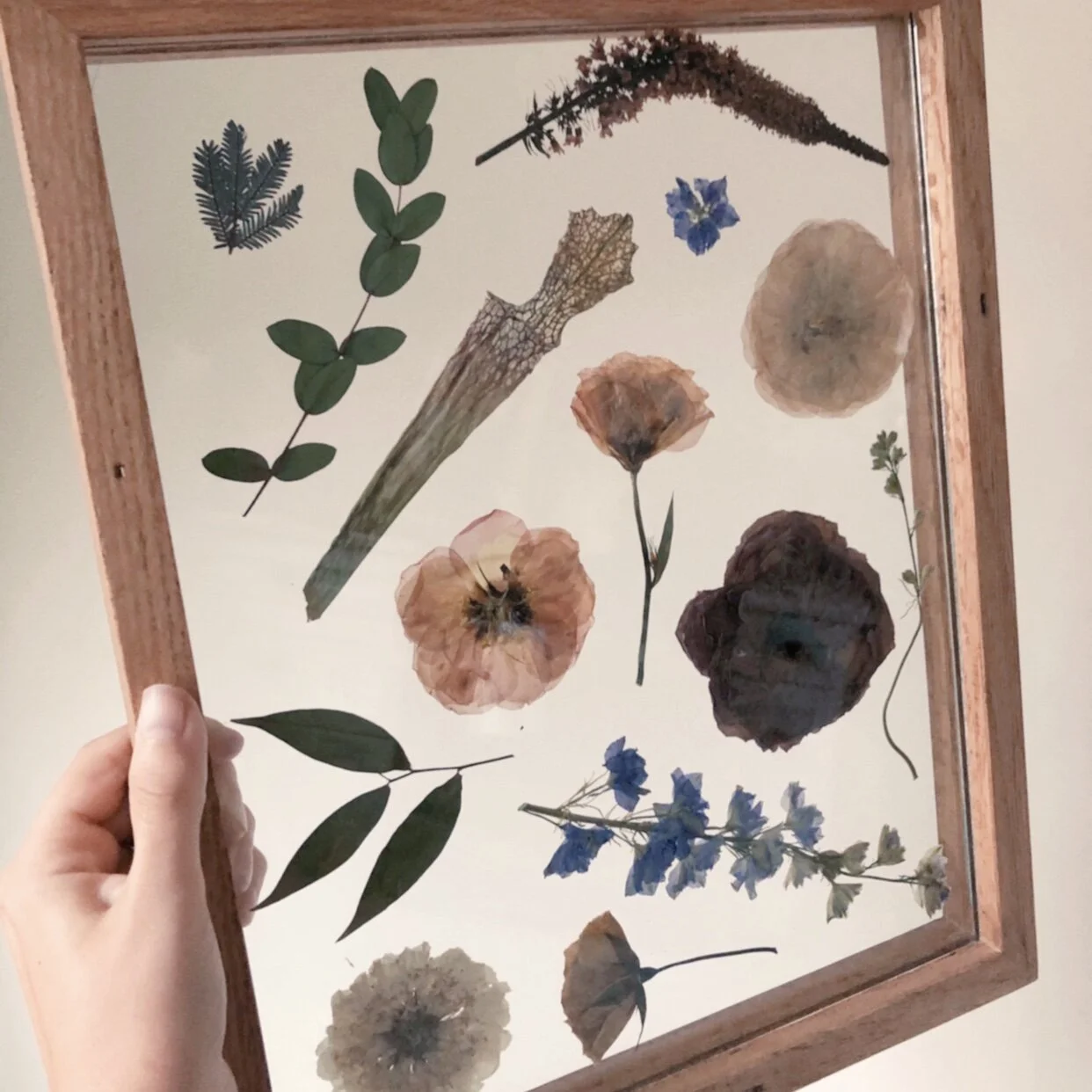Selecting flowers for pressing
Needless to say, a lot has changed for flower businesses since March! And I know as well as anyone the pressure to keep on keepin' on.
A bright spot in my business has been preserving flowers for clients through modern pressed flower art. It's a highly in-demand service with very few competitors, even in a large city like Detroit (where I'm from).
Pressing flowers for clients has been a great way to supplement my income, but I know it can be nerve-wracking to be trusted with such a meaningful task.
One of the keys to success when pressing flowers is knowing the right types of flowers to use and how to make them work in a press. If you’re planning on pressing a wedding bouquet, I always suggest gathering more info from the couple on the flowers being used to ensure you’ll get nice results.
Here are some tips for selecting the best flowers for pressing:
THE FIRST AND MOST IMPORTANT THING TO KNOW:
Your flowers must be fresh to be pressed. You cannot press dried flowers because they will shatter. The fresher the flowers, the better success you’ll see. If you’re pressing flowers from an event such as a wedding or funeral, try to get the flowers into the press within the following 1-2 days.
Flowers at their peak will press best. Flowers that are slightly browning or beginning to wilt may still press fine, possibly with some discoloration. Do not attempt to press decaying or badly wilted flowers.
Water Content and Petal Count
The next thing to consider when selecting flowers to press is water content and how many layers of petals the flower has. Different flowers hold different amounts of moisture, and flowers with low water content and only a single layer of petals tend to press better. Flowers that hold a lot of moisture with lots of layers of petals or a thick center are nearly impossible to successfully press and are more likely to get moldy.
Flowers with low water content and few petal layers that press nicely:
Larkspur
Delphinium
Anemone
Feverfew/Chamomile
Cosmos
Pansies
Queen Anne’s Lace
Veronica
Amaranthus
Scabiosa
Flat Leaves and Foliage
Flowers with high water content and/or petal count that don’t press nicely:
Roses
Garden Roses
Dahlias
Zinnias
Marigolds
Hibiscus
Carnations
If you still want to incorporate these types of flowers into your project, you can carefully remove the center of the flower or remove petals and press them individually. Later, you can reassemble the petals into the original flower shape without the thick center (this takes some practice) or simply use individual petals in your designed piece.
Some flowers like ranunculus, lisianthus and spray roses fall somewhere in the middle of this spectrum and may be worth pressing. Try experimenting with different flowers to see what works best, and practice with some blooms before you attempt to press one-of-a-kind flowers from a special event.
Color
The last thing to consider when choosing flowers to press is color. Light colored flowers (white, ivory, blush) tend to turn yellowish-brown in the press, which some people like to avoid. Darker, brighter and more saturated colors tend to retain their color better and look best coming out of the press. All of your flower colors will change at least slightly in the drying process.
>>> If you found these tips helpful and want to learn more about pressing flowers, please check out my ebook, Pressed Flowers: A Modern Approach to Preserving Beautiful Blooms, that will give you the confidence to learn and offer this service. It's a jam-packed, 25-page guide with supply lists, how-tos, tips, inspiration images, project ideas and more!
The best part? It's just $14.99 and available now through digital download. A small price to pay for the time you'll save learning the craft and the added revenue you can make!
GET THE BOOK HERE
Can't wait to see what you design.
-Liz
